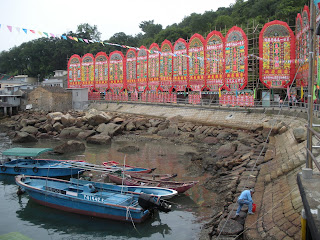When I was looking for a home in Grand Rapids, I kept coming back to a particular part of the city. What drew me there? It was the sidewalks, the local shopping area, the small city lots (small by American standards), and people out taking walks, talking to each other outside. And it was the presence of children riding their bikes and trikes up and down the sidewalks. My instincts proved to be right. In the end I bought a house in a part of that neighborhood that naturally forms a unit of about thirty homes. We all have a map on our bulletin boards with addresses, names, and phone numbers. It has been a rich place where neighborliness is learned and lived out daily. We all have keys to each others homes. One neighbor even told me she hoped I didn't mind because she had gone into my house during the day and used the ketchup for her child care children. She had run out. This summer another neighbor allowed her pool to become the "neighborhood" pool, deciding that the joy of letting others use it was greater than concerns over liability.
When my daughters were younger, my next door neighbor started putting up a fence. I remember seeing my daughter standing over by him, dismayed over this actions. After all, the rules were that children were allowed to cross the yards. He turned to her and assured her that the fence was temporary, meant to keep his pre-schoolers in and not my daughter out. It has since come down.
Then there was the time when multiple neighbors were gone at overlapping time periods, making pet care complicated as we all put together a schedule and the children of the neighborhood got early work experience taking care of one another's animals. And the other time when a neighboring family left for a week and forgot that they had not given us their key. I managed to get the window open a crack and the screen up to let the cat out, but squeezing the cat back into the house through the four inch opening proved to be impossible. Eventually we managed to track them down through friends of friends. The cat avoided me for the longest time.
This past week was stressful for many of us. A huge limb went down on the power lines causing a fire and a huge power surge. Just as we were figuring out what had been fried--TVs, washing machines, furnaces, computers, phones etc., a huge storm took out power for a huge part of the city for 24 hours. As we regrouped, the quality that I so value again became evident. We needed to try a phone on our lines that had not been hooked up during the power surge. One neighbor had one and brought it to my house. I passed it through the window to the next house. I was concerned about the safety of my house because of the smell of burning electric wires. I couldn't get in touch with an electrician so a neighbor called a friend who was an electrician. When I finally got an electrician to my house I took him to check out the house of an older neighbor across the street. And when we had trouble convincing the phone company that it was not our phones or houses but the melted electric wire in front of us, we passed the cell phone from person to person to talk to the representative.
Last night I went to my book club, which has evolved into a neighborhood book club. The name of the book club is, "It's about the book, stupid." The reason for the name and its becoming a neighborhood book club is that often such gatherings turn into discussions about work, school, or church. I wanted one that did not overlap with these spheres--I wanted to talk about the book and ideas! So it formed around the rule that we could not share any of these social networks, but we have ended up as a group that does share space. This is the richness of a neighborhood. It brings together people who otherwise would not encounter each other, building a network of care,trust, and yes, sometimes tensions. So here is to my neighborhood of teachers, artists, construction workers, retired nurses, landscapers, factory workers, accountants, stay-at-home parents, health care professionals, human resource directors, computer programmers, and hair stylists who are Dutch, Polish, Catholic, Reformed, Baptist, African-American, Lutheran, Finnish, and whatever. And of course, here is to the many, many children who give us joy, and the animals: cats, dogs, lizards, fish, hamsters, turtles, snakes, and gerbils.
Today as I worked on cleaning up the limbs from my yard, dropped during the storm, visiting with the others that were out walking dogs or working in their yards, I thought, it has been a hard week, but it still doesn't get much better than this.














































































